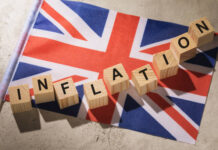Mood yesterday was mixed on a series of mixed economic and corporate news. In Europe, the business and consumer survey came in slightly lower than expected, the CAC 40 lost more than 1%, the Stoxx 600 fell. The German stocks did better than their European peers as some big names like Siemens and SAP outperformed, while in the UK, the FTSE 100 sank below its 50-DMA despite a softer pound and a positive breakout in oil prices.
US crude finally cleared the critical $82pb resistance, and returned to the positive trend that was building at the start of the year. The April to June selloff is fully behind us now, trend and momentum indicators remain positive while the market is not yet in the overbought territory meaning that there is room for further gains in the short run. From a technical perspective, the outlook has improved. From a fundamental point of view, news are supportive as well. Yesterday’s GDP update from the US confirmed that the US economy slowed in Q1 to grow just 1.4%, but the print was slightly better than the 1.3% expected, and down from 3.4% printed a quarter earlier. Sales and consumer spending halved, inventories rose. Price indications were not enchanting but investors looked past these components as the uptick we saw in first quarter inflation is thought to have slowed past the Q1. All in all data was positive for the reflation trade.
Other than that, the US trade deficit widened to highest levels in 2 years, pending home sales fell 2% and the jobless claims rose to the highest levels since last summer. Data hinted at further slowdown in the US economy, but the slowdown didn’t look catastrophic. As such, the data fueled the dovish Fed expectations and boosted appetite for the US treasuries, as well, along with a strong sale of 7-year bonds, following good sales of 2 and 5-year bonds earlier in the week. The US 2-year yield tested but remained above the 4.70% level, the 10-year yield fluctuated near 4.30%. The S&P500 and Nasdaq eked out small gains as Federal Reserve (Fed) rate cut hopes rose, with some investors expecting up to two rate cuts from now to the end of the year, and the US dollar eased, but rebounded in Asia as the presidential debate between Trump and Biden favoured… Trump.
There is one more thing to watch before this week ends: the core PCE data – the Fed’s favourite gauge of inflation that’s expected to show further weakness in both headline and core numbers. If that’s the case, combined with yesterday’s softish growth data, we could see the Fed doves remain in charge of the market. The latter could help broaden the US stock rally to non-tech sectors, and toward the reflation-friendly European markets.
Euro under pressure
Some Eurozone countries will reveal their preliminary inflation numbers for June today. Sufficiently soft data is needed to keep the European Central Bank (ECB) doves alive, but for the euro, the upcoming French election this weekend is probably more important than the inflation figures as regardless of the data – unless we see something very much unexpected – many investors will probably chose to go into the French election weekend without a positive exposure to the euro given that Marine Le Pen’s National Rally is seen securing one vote out of three, and that’s not the outcome that the market is happy with. The spread between the French and German 10-year yield is back above 80bp and could further widen depending on the French election outcome. Higher yield differential means lower appetite for euro. It could be that a blow to Macron has already priced in (and overly priced in) and the euro could rebound in a typical ‘buy the rumour sell the fact’ move on Monday open, but volatility will likely be on the menu and the euro could – regardless of the inflation figures on both sides of the Atlantic – further ease against the greenback before the weekly close. The EURUSD currently trades below 1.07 mark. We could see the pair fall below the 1.0660 level – that acted as a support since Macron called for the snap election.
A last word for the yen: the USDJPY was trading past the 161 level this morning, with no news of intervention on the wire just yet. The yen bears are looking for the limit, while the risk of intervention grows with every pip higher.













